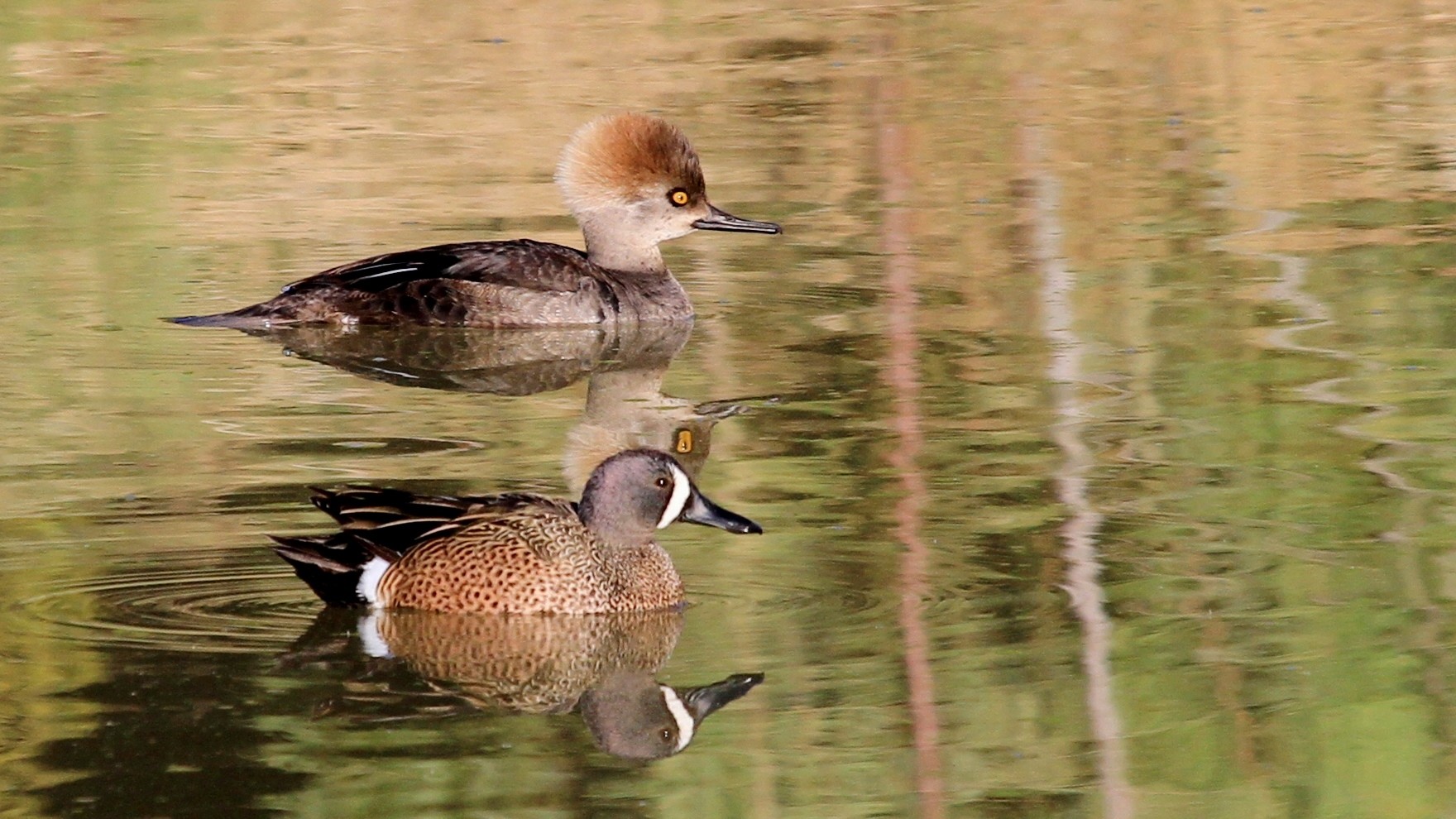 Where does blue-winged Teal usually live?
Where does blue-winged Teal usually live?
Where does blue-winged Teal usually live?
Blue-winged teal inhabit shoreline more often than open water and prefer calm water or sluggish currents to fast water. They inhabit inland marshes, lakes, ponds, pools, and shallow streams with dense emergent vegetation. In coastal areas, breeding occurs in salt-marsh meadows with adjoining ponds or creeks. Blue-winged teal use rocks protruding above water, muskrat houses, trunks or limbs of fallen trees, bare stretches of shoreline, or mud flats for resting sites. Blue-winged teal winter on shallow inland freshwater marshes and brackish and saltwater marshes. They build their nests on dry ground in grassy sites such as bluegrass meadows, hayfields, and sedge meadows. They will also nest in areas with very short, sparse vegetation. Blue-winged teal generally nest within several hundred yards of open water; however, nests have been found as far as 1.61 km (1 mi) away from water. Where the habitat is good, they nest communally. Blue-winged teal often use heavy growth of bulrushes and cattails as escape cover. Grasses, sedges, and hayfields provide nesting cover for these ducks. Erik Fritzell reported that blue-winged teal nests located in light to sparse cover were more successful than those in heavy cover. Nesting success was 47% on grazed areas and 14% on ungrazed areas. The blue-winged teal is primarily found in the northern prairies and parklands. It is the most abundant duck in the mixed-grass prairies of the Dakotas and the prairie provinces of Canada. The blue-winged teal is also found in wetlands of boreal forest associations, shortgrass prairies, tallgrass prairies, and deciduous woodlands. This duck commonly inhabits wetland communities dominated by bulrush (Scirpus spp.), cattail (Typha spp.), pondweed (Potamogeton spp.), sedges (Carex spp.), widgeongrass (Ruppia maritima), and other emergent and aquatic vegetation. During molting, it often remains among extensive beds of bulrushes and cattails. The blue-winged teal favors areas dominated by bluegrass (Poa spp.) for nesting. Hayfields and plant communities of buckbrush (Ceonothus cuneatus) and sedges are also important as nest sites.
